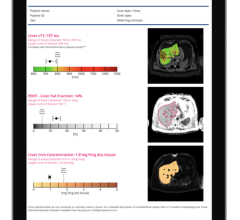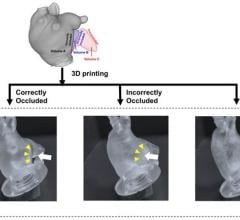October 1, 2013 — Whole-body magnetic resonance imaging (MRI) may serve as a valuable noninvasive tool for assessing the risk of heart attack and stroke in diabetic patients, according to a new clinical study published online in the journal Radiology.
Diabetes is a metabolic disease characterized by an increased concentration of glucose in the blood. There are 347 million diabetic patients worldwide, and the World Health Organization projects that diabetes will be the seventh leading cause of death by 2030.
Patients with diabetes are known to develop atherosclerosis, or thickening of the arterial walls, at an accelerated rate, resulting in a higher incidence of major adverse cardiac and cerebrovascular events (MACCE), such as a heart attack or stroke. However, there are wide variations in the degree of risk for adverse events among diabetic patients.
In recent years, whole-body MRI has emerged as a promising means to assess the cardiovascular systems of people with diabetes.
“One of the major advantages of whole-body MRI in this population is that the technique itself is not associated with radiation exposure, and larger body areas can be covered without increased risk, especially in younger patients,” said Fabian Bamberg, M.D., MPH, from the Department of Radiology at Ludwig-Maximilians University in Munich, Germany. “As such, MRI can be used to evaluate the whole-body degree of disease burden that is not clinically apparent yet.”
Bamberg and colleagues studied the predictive value of whole-body MRI for the occurrence of MACCE in 65 patients with diabetes. The patients underwent a contrast-enhanced, whole-body MRI protocol, including brain, cardiac and vascular sequences. The researchers then conducted follow-up inquiries to assess the rate of MACCE in the study group.
Follow-up information was available for 61 patients. After a median of 5.8 years, 14 patients had experienced MACCE. Patients who had detectable vascular changes on whole-body MRI faced a cumulative MACCE risk rate of 20 percent at three years, and 35 percent at six years. None of the patients with a normal whole-body MRI went on to experience MACCE.
The findings point to a role for whole-body MRI as an accurate prognostic tool for diabetic patients that could speed effective treatments to those at risk, Bamberg said.
“Whole-body MRI may help in identifying patients who are at very high risk for future events and require intensified treatment or observation,” he said. “Conversely, the absence of any changes on whole-body MRI may reassure diabetic patients that their risk for a heart attack, stroke or other major cardiac or cerebrovascular event is low.”
Along with its prognostic accuracy, whole-body MRI has other advantages over existing methods of determining heart attack risk, according to Bamberg.
“Other established and valuable tools, such as myocardial perfusion imaging or computed tomography (CT) for quantification of coronary calcification, are generally limited to cardiac evaluation due to their associated risk profiles,” he said. “Also, MRI provides unique insights into soft tissue pathology, including cerebral and vascular changes, such as restriction of blood flow to the brain.”
Bamberg said that while whole-body MRI is a relatively recent development that needs more study, the results so far are promising.
“Our study provides preliminary evidence that the technique may be beneficial for risk stratification in patients with diabetes,” he said. “We anticipate that emerging study findings in different diabetic cohorts will provide additional scientific basis to establish whole-body MRI as a screening modality.”
The study, published by the journal Radiology, is titled “Diabetes Mellitus: Long-term Prognostic Value of Whole-Body MR Imaging for the Occurrence of Cardiac and Cerebrovascular Events.”
For more information: radiology.rsna.org


 October 31, 2025
October 31, 2025 








